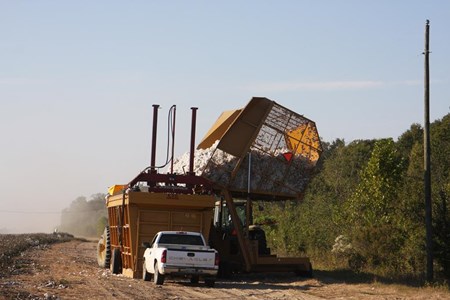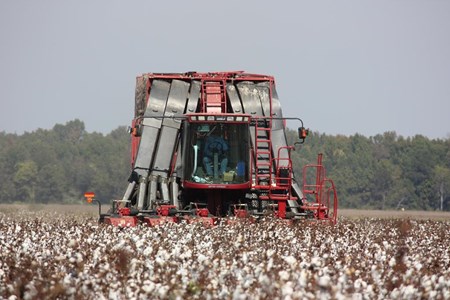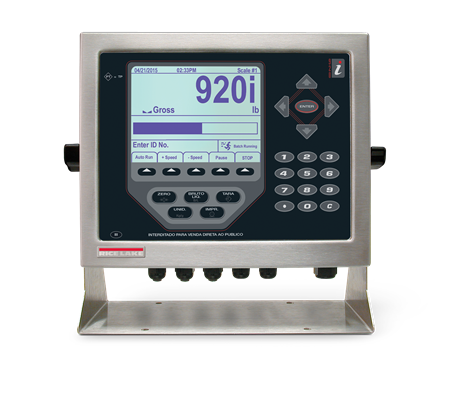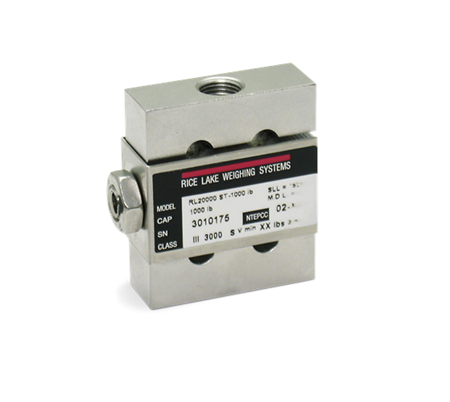Is the website displaying in the correct language? Please confirm or select a different language.
Your region has been set automatically. Please confirm or select a different region.
The Cotton-picking 920i
Rice Lake's 920i indicator/controller is part of agricultural weighing and data management systems that simplify cotton and grain test plot harvesting for major seed companies and research universities.
Master Scales' specialty is harvesting equipment and data management systems. Their Agricultural Weighing & Data Management systems have simplified cotton and grain test plot harvesting for major seed companies and research universities. Clients include Monsanto and many university research teams and equipment buyers from the U.S. cotton states to Australia, Brazil, Costa Rica, Greece and Turkey.
Owner Jason McDonald’s indicator of choice is Rice Lake’s 920i®. “In our eyes, Rice Lake puts out a superior product. One factor is the 920i’s ease of setup and programming. We like the fact that we can program with a PC and check things through the front panel.“We toured the factory in Rice Lake and compared the commitment from Rice Lake to the commitment we were getting elsewhere. We switched to the 920i about four years ago because it had a bigger display and gave us full control to divert air, open and close doors, replace the air diverter and move the tramper auger.
“The I/O action on the 920i is cleaner, smoother, more accurate and efficient. The operator can see the last eight weighments with iRite IDE® programming the display.” Functionality can be customized to provide the customer with an HMI that supports their application and can be instantly reviewed and recalculated if necessary.
A gust of wind—and in Texas the wind blows continually—can affect weight accuracy. Stable weight is achieved through five filtering parameters and sample settings for environmental influences like wind.“The standard weight is 30 pounds per plot. In some areas the standard is 50 pounds per 40 foot plot. The picker can hold 1700 to 2000 pounds of cotton or 350 plots before it dumps the load into cotton boll buggies. There is a screen in the cab and a camera is mounted on the back of the picker so the operator can see the weigh basket and monitor the process—if the gates are closing properly and if cotton is building up under the scale.
“There are up to nine definable databases that can support as many as 20 columns per record. Before the operator harvests the field he enters the location and range number. The first plot is 01024 then 02024 then 03024 to finally 10024, picking the rows in a serpentine pattern.“We use 500-pound capacity S-beam load cells in the weigh basket. The cotton is blown into the main basket where a tramper auger packs it. The 920i captures a sample weight every 37 seconds and stores the data. At the end of the day the operator downloads the data on a laptop running a Windows® application called 920i Interchange® that allows the data to be transferred into Excel® in a comma delimited file, opens Excel and transports that data onto a spreadsheet.”
In a research cotton field every two rows are a different type of cotton. All but four percent do not make the weight for maximum yield. Jason says the research team is out in the field taking notes from the time the cotton is planted. “They capture data like how much fertilizer and chemicals they use, how many blossoms, then squares, then bolls are on the plant. They want to know the lint length and tensile strength. Before this system it took up to ten people to do the same work. One driver, two people to put bags on the chutes, two people to take them off when full and throw them off the field, and two people to catch the bags and throw them into trucks. Two others weighed the bags with a crane scale or a hanging scale. One researcher wrote down the data.”
That was then, this is now. Jason and Sandy Land, sales manager, are visiting Rice Lake with a group of researchers from the University of Arkansas where they conduct grain research. The 920i will be able to handle that as well.The flexibility of the 920i allows adding multiple scales, serial interfaces and memory for devices like GPS locators to capture plot coordinates.
Jason says, “We plan to install a 920i and cantilever beam load cells for the grain weigh-hopper we’re developing. Grain will be weighed after a plot of grain is cut. During the cutting process a sample will be caught separately from the main hopper. This sample will be tested for moisture level and possibly temperature. The sample will then be weighed separately from the rest of the grain, which is also weighed. We are able to store this information in the 920i. With coordinates entered by the user before harvesting, we are able to put all the location and weight data together for their studies. This will be the first time we have put together this type of system.”
Jason runs the company with his wife, Annette. “I’m the tech. That’s what I like to do. Get out of the office. The 920i is easy to service, and Rice Lake is willing to send factory personnel to help figure out any problem. Paul Cernick, Rice Lake training coordinator, talks about customer service in his presentation. Rice Lake certainly does that.”
Subscribe to Rice Lake Magazine
Sign in or create a Rice Lake website account to request a Rice Lake Magazine filled with application stories like this one be sent to you.
Account Sign In Create an Account


 My Account
My Account











